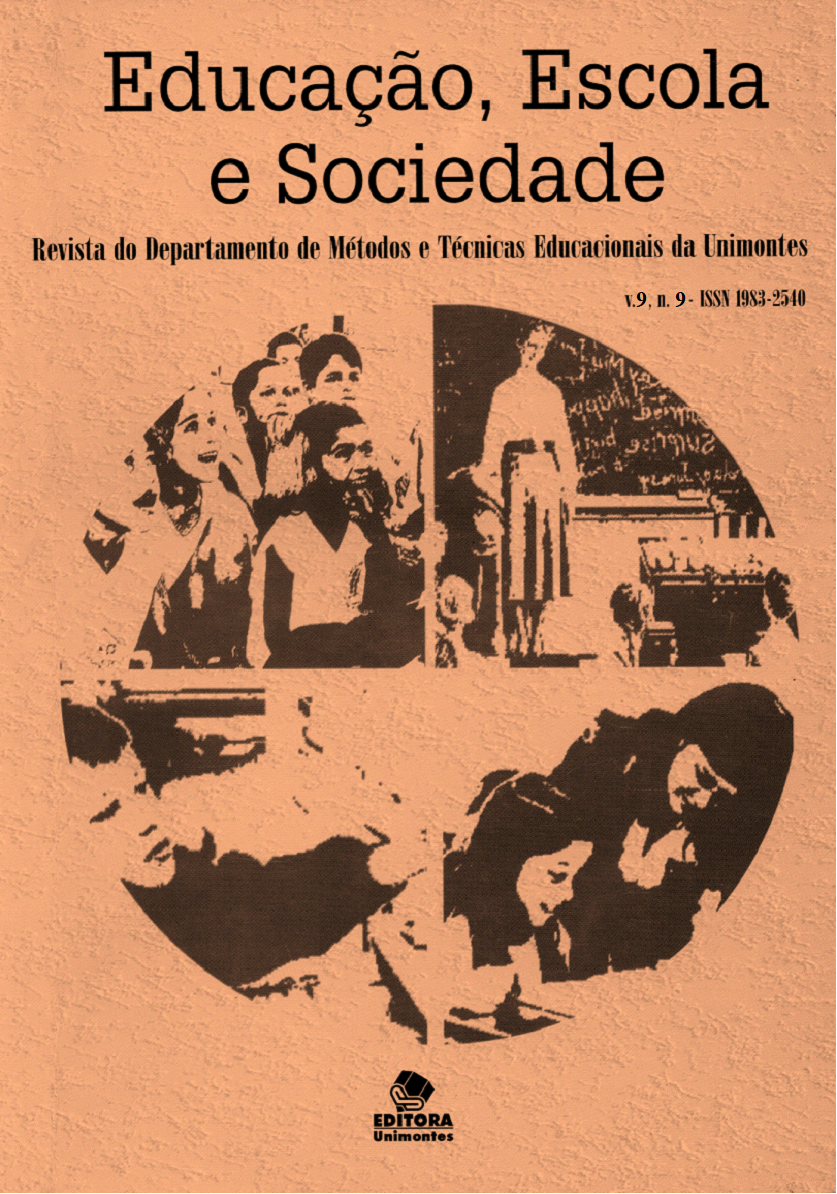O caderno de uma aluna de 1950 e as práticas avaliativas de Matemática
Resumen
Para esse trabalho de pesquisa elegemos como objetivo o de discutir as representações produzidas e as práticas educativas desenvolvidas para ensino da Matemática e avaliação de sua aprendizagem em escolas primárias da região Norte do Estado de Minas Gerais. O recorte temporal definiu-se pelas primeiras décadas do século XX, mais especificamente em 1956, período em que ocorrem transformações significativas nas práticas de ensino desenvolvidas nas escolas brasileiras. Nesse artigo fizemos a análise de um caderno de aluna do 4ª ano da escola primária, na década de 1950, com registros datados de 20 de março a 29 de setembro de 1956. O caderno era utilizado para registrar as atividades avaliativas, que eram corrigidas pelo professor, no próprio caderno e atribuído o valor quantitativo de cada atividade. Quase todas as atividades registradas no caderno da aluna têm características metodológicas de um Estudo Dirigido, principalmente a lista de atividades e os questionários. Os registros do caderno da aluna demonstraram que as práticas avaliativas em Matemática eram fundamentadas pela Tendência Formalista Clássica não inserindo em seu cotidiano práticas educativas propostas pelos pensadores inseridos nos Movimentos da Escola Nova e da Matemática Moderna.
Palavras-chave: Práticas avaliativas. Conteúdos matemáticos. História cultural.
Descargas
Citas
BARROS, J. D. O campo da história: especialidades e abordagens. Petrópolis-RJ: Vozes, 2004.
DI GIORGI, Cristiano. Escola Nova. São Paulo: Ática, 1989.
FIORENTINI, D. Alguns modos de ver e conceber o ensino de Matemática no Brasil. Revista Zetetiké, 1995, Ano 3, nº 4.
GUIMARÃES, H. M. Por uma Matemática Nova nas Escolas secundárias – Perspectivas e orientações curriculares da Matemática Moderna. In: MATOS, J. M.; VALENTE, W. R. (ORG.). A Matemática moderna nas escolas do Brasil e Portugal: primeiros estudos. São Paulo: Da Vince, 2007, p. 21-45.
JULIA, Dominique. A Cultura escolar como objeto histórico. Revista Brasileira de História da Educação. SBHR. Campinas-SP: Editora e Autores Associados. Jan/jun/2001.
LANDO, Janice Cassia. O estudo dirigido no ensino de Matemática no Brasil (1955-1966). Anais do CIAEM- XIII Conferência Interamericana de Educação Matemática. 26 a 30 de junho/2011. Recife/Brasil, 2011.
MATTOS, L. M. O Estudo Dirigido: sua organização, modalidades e técnica de direção. Anais do I Congresso Nacional de Ensino da Matemática no Curso Secundário (pp. 213-231). Salvador: Tipografia Benedita Ltda, 1957.
MIORIM, Maria Ângela. Introdução à história da educação matemática. São Paulo: Ática, 1998.
PESAVENTO, S. J. História e história cultural. Belo Horizonte: Autêntica, 2003.
ROMANELLI, Otaiza Oliveira. História da Educação no Brasil. Petrópolis: Vozes, 1993.
ROXO, Euclides. A Matemática na educação secundária. São Paulo: Editora Nacional, 1937.
SCHUBRING, G. O primeiro movimento internacional de reforma curricular em Matemática e o papel da Alemanha: um estudo de caso na transmissão de conceitos. Zetetiké. CEMPEM-FE/UNICAMP - Campinas, 1999- janeiro/junho, p.29-50.
VALENTE, W. R. Uma história da Matemática escolar no Brasil (1730-1930). São Paulo: Annablume: FAPESP, 2007.
VIDAL, D. G. Escola Nova e Processo Educativo. In: LOPES, E. M. T.; FARIA FILHO, L. M.; VEIGA, C. G. (ORG.). 500 anos de educação no Brasil. p. 497-517. Belo Horizonte: Autêntica, 2005. VIÑAO FRAGO, A. Alfabetização na sociedade e na história. Porto Alegre: Artes Médicas, 1993.














